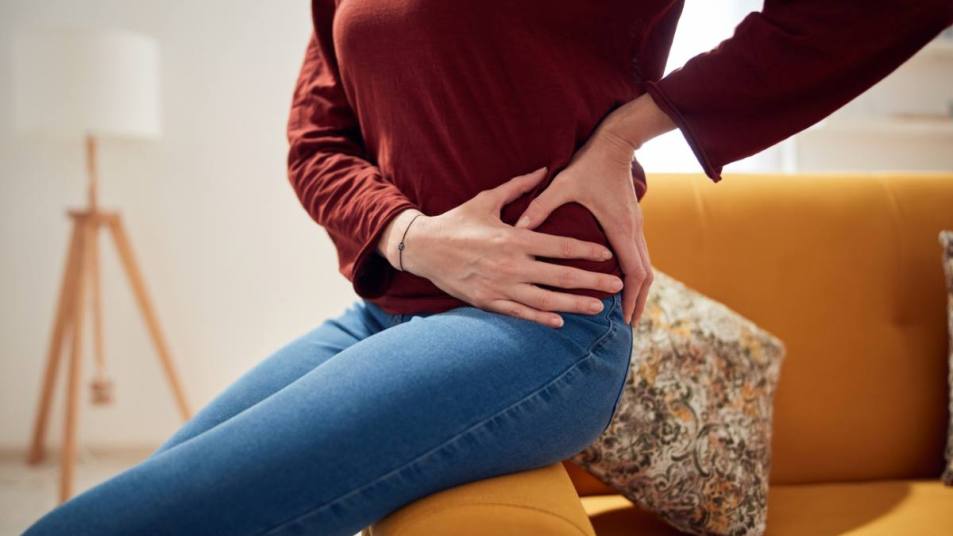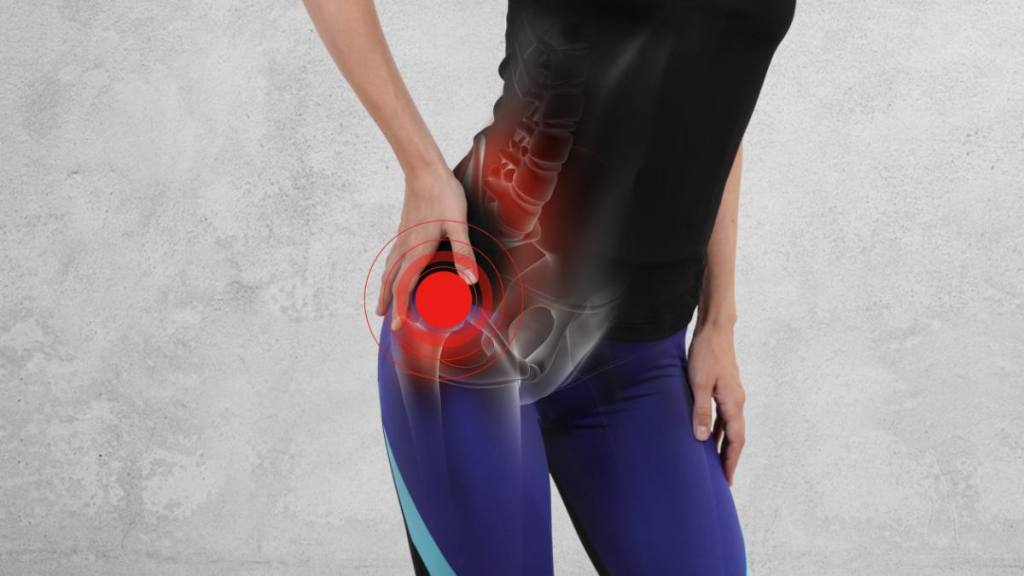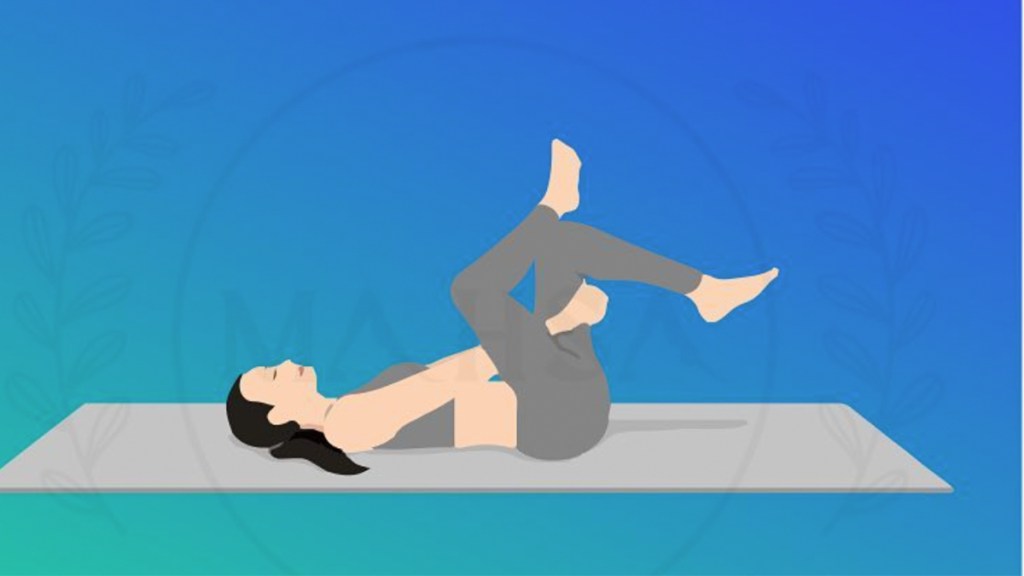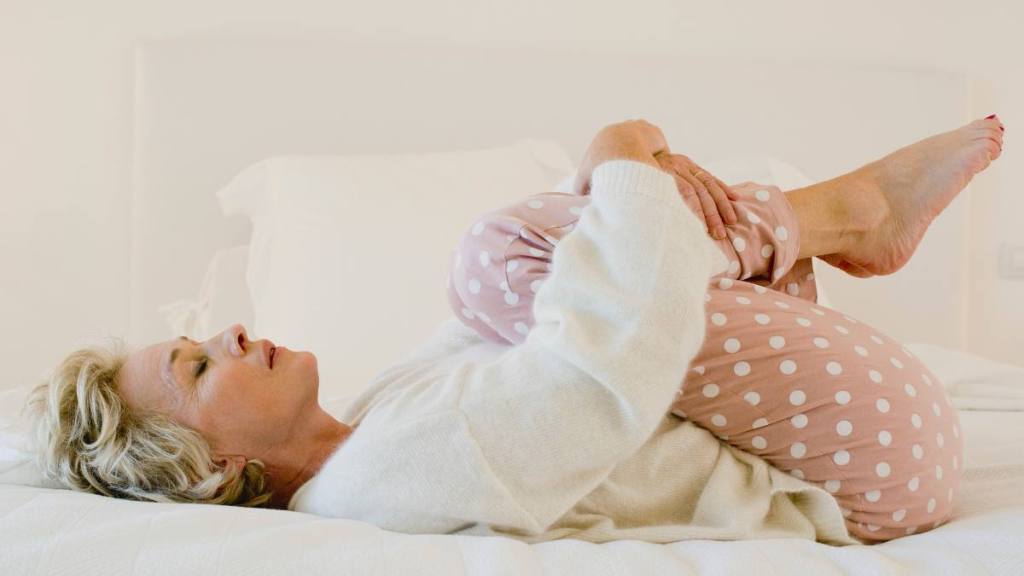Experts Identify the Surprising Culprit Behind Hip Pain + Relaxing Strategies to Soothe It Fast
Mind/body experts explain the surprising way emotions lead to pain — and how to outsmart it

Research shows that hip pain is much more common in women than in men, owing largely to our increased risk of osteoarthritis and tendonitis. But you may be surprised that a sneaky cause of stiff, tight hips runs far deeper than muscles, bones or tendons: emotions, or more precisely, emotions stored in hips.
“We store anxiety and tension in our body,” declares stress expert Alane K. Daugherty, PhD, author of Unstressed: How Somatic Awareness Can Transform Your Body’s Stress Response and Build Emotional Resilience and co-director of the Mind and Heart Research Lab at California Polytechnic State University, Pomona.
Indeed, she says our entire body is like a “subconscious brain,” carrying our emotional lives and recording all our responses, including trauma, that often lead to aches. This is especially common in the hip — a complex, weight-bearing joint that takes the brunt of our stress. “The limbic system, where emotions are housed, is more connected to our body, through an intricate neural network, than it is to our logical left brain,” she reveals. “But the problem is we’re always trying to process what we’re feeling through our rational mind.” We’re better off listening to what our body is trying to tell us — it’s smarter than we give it credit for. And just knowing this can help us outsmart emotion stored in hips.
Why are emotions stored in hips?
“The psoas — which flexes the hips and is the only muscle that connects the upper to the lower body — tends to contract in times of stress,” says Daugherty. She notes that our hips also have sensory receptors, which send messages that we’re anxious or depressed back up to our brain. As if that weren’t enough evidence for why our pelvis is like a magnet for emotions, she adds that our adrenal glands, which secrete the stress hormone cortisol, sit on top of the kidneys and can affect our hips. “There are a whole lot of emotional responses in the lower torso. If any of these are knocked off balance, our hip area will get out of joint, telling the brain: ‘She’s stressed out, better stress her out more!’” She continues, “It can cause a downward spiral for sure, but the good news is, if we know what’s going on, we can create an upward spiral of healing by listening to our hips and targeting them with soothing strategies.”
Read on for a few relaxing mind-body remedies and stretches that can help release painful emotions stored in hips and deliver lasting relief. But first, consult your doctor or medical professional before starting a new physical regimen and stop immediately if you feel any pain.
1. Listen to the wisdom of your hips

Taking a few minutes in a quiet space to relax and ground yourself can help you tap a huge reservoir of awareness, assures Daugherty. “Women have such a strong intuitive way of being, but we’re often talked out of listening to it by society.” She encourages reclaiming this inner voice by breathing deeply, longer on the exhale, to trigger the relaxing parasympathetic nervous system. Open your heart and mind to any sensations or ideas that may arise, from tightness in your hips to a flash of a memory. “Then ask your body what it’s feeling and what it needs to heal. Simply becoming conscious of your sensations will help shift your thinking.”
Letting this experience guide you can be incredibly empowering, Daugherty promises. She was born with hip dysplasia and had hip surgery two months ago, a procedure she was reluctant to undergo. “I worried about the trauma to my body, but when I grounded myself, I saw an image of a woman residing in my hips saying, ‘We’re good, you can do this.’” Such encouraging imagery may defy logic … and that’s the point. “Rather than try to figure it out from your rational left brain, heed the intuition of your body,” she says.
A word of caution: Tapping what she calls “somatic wisdom” can be overwhelming, like suddenly going from the dark into the blinding light. “Some people start crying when they bring awareness to their hips because the rush of feelings is intense.” If you find yourself overcome, Daugherty suggests inviting the image of an all-loving mother to soothe your mind, body and spirit. They say everyone has an angel on their shoulder, so why not picture one on your hips, too.
2. Relax your pelvis with a pigeon pose

Gentle, restorative stretches are shown to reduce stress, alleviate hip pain and improve mobility, says yoga therapist Cyndi Roberts, CIAYT, ERYT500, YACEP, author of Yoga For Low Back and Hip Health. One of her favorite moves is the Reclined Pigeon Pose. As its name implies, it can be done lying on the floor or, even better, in bed! “This stretch can easily be incorporated into your day and helps open up the muscles in the back of the hips and lower back,” she says. “It also soothes nerve pain. In fact, I teach it to my prenatal clients to ease the pressure of the baby on their discs.”
To do:
- Lie flat on your back with a blanket folded under your head; knees bent and feet flat on the floor or bed
- Cross your right ankle over your left thigh
- Press out through your right heel to protect your knee and ankle joints
- Bring your right hand to your right knee and gently press your knee away, opening the back of the hip
- For more intensity, grab your right heel with your left hand and lift it off your thigh or interlace your hands behind your thigh and lift your foot off the ground
- If the opposite foot is lifted, use your thigh as leverage to draw your foot in close to your chest as you open the knee away from your chest
- Breathe 10-20 cycles (inhale and exhale); switch sides and repeat
3. Ease pain with a ‘hug’

Is there a better way to start (or end) your day than with an embrace? “This reclined knee-hug stretch contracts muscles in your hips and low back, so that when the muscles release, blood flow to those areas increases, soothing pain and tightness caused from sitting or standing too long,” says Roberts. Not only does this simple move alleviate stiffness, but just hugging yourself spurs the release of feel-good chemicals like the bonding hormone oxytocin, lifting your mood instantly.
To do:
- Lie flat on your back with a blanket under your head; knees bent, feet flat on the floor or bed
- Lift both knees off the floor or bed and hug both knees into your chest, hands interlaced over or under your knees.
- Press your low back into the floor or bed as you soften the muscles in your shoulders, neck and face.
- Breathe for 10-20 cycles (inhale and exhale) or longer for a deeper stretch and release
- To release: let go of your knees and let your feet rest on the ground or bed; rest for a few second then repeat the stretch a few more times
4. Apply gentle pressure
Our brain’s main job is to protect us, so when it perceives a threat, like stress, it prepares our muscles to either run or hide, triggering the fight-or-flight response, reveals holistic physical therapist, Christine Koth, MPT, author of Tight Hip, Twisted Core: The Key to Unresolved Pain and founder of Aletha Health. “When we’re gearing up to run, the muscles that get activated are the hip flexors,” she reveals. But what about if we’re preparing to hide? “Those same hip flexors are triggered so we can curl up into a ball. That’s why these are the muscles that feel tightest when we experience stress or trauma.”
To alleviate this pent-up tension, she advises putting gentle, prolonged pressure on your hip muscles. You can use a ball or a foam roller to do just that — or consider Koth’s hip-tension-taming tools The Set.
“When you first apply pressure, your brain’s response will be, ‘Oh no!’ But after 20 to 30 seconds, your muscles relax, releasing tightness and signaling that you’re safe. Many people who do this report getting into a meditative state,” she says.
What to do if one hip is more painful than the other
“In my experience, each person typically has one tighter side, which may be the right or the left hip,” reveals Roberts. If you notice this asymmetry, take it as invitation to get a little curious about what you’re feeling, she suggests.
“For example, if you’re practicing the ‘knee hug’ stretch on your right side, slow your breath, add a few gentle knee circles and ask yourself if you’re feeling any discomfort. Notice where you feel that tension, then circle the other direction and inquire again. Do the same when you hug your left knee in.” She suggests observing your breath. Is it deep or do you tend to hold it? “Observe which thoughts come to mind, or if emotions like anxiety or fear arise. Breathe more slowly to help you release what bubbles up.”
Let yourself focus on where you may feel thoughts or emotions in your body, then send your healing breath there, she encourages. “This exploration allows you to know yourself better and attune to your needs. Be gentle and kind with yourself and you’ll discover your interior landscape and all the wisdom it has to offer.”
For a quick how-to, check out the video below:
This content is not a substitute for professional medical advice or diagnosis. Always consult your physician before pursuing any treatment plan.
For more on pain relief, keep reading:
The Fun Exercise That Cured One Woman’s Chronic Pain and Gave Her a New Lease on Life
5 Stretches You Can Do In Bed to Melt Away Neck and Shoulder Pain
How to Get Rid of a Neck Hump — And Soothe Neck and Back Pain in the Process

















